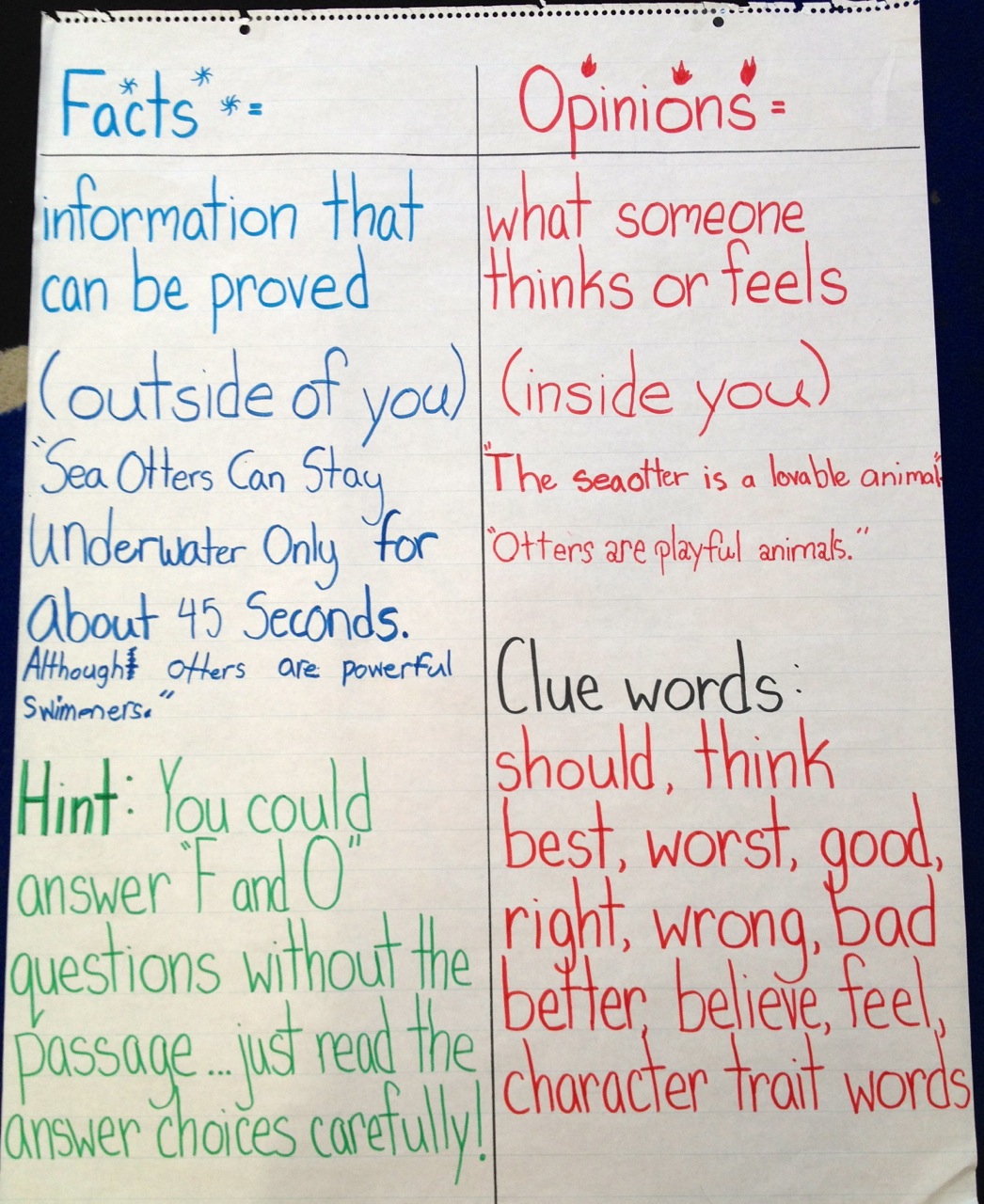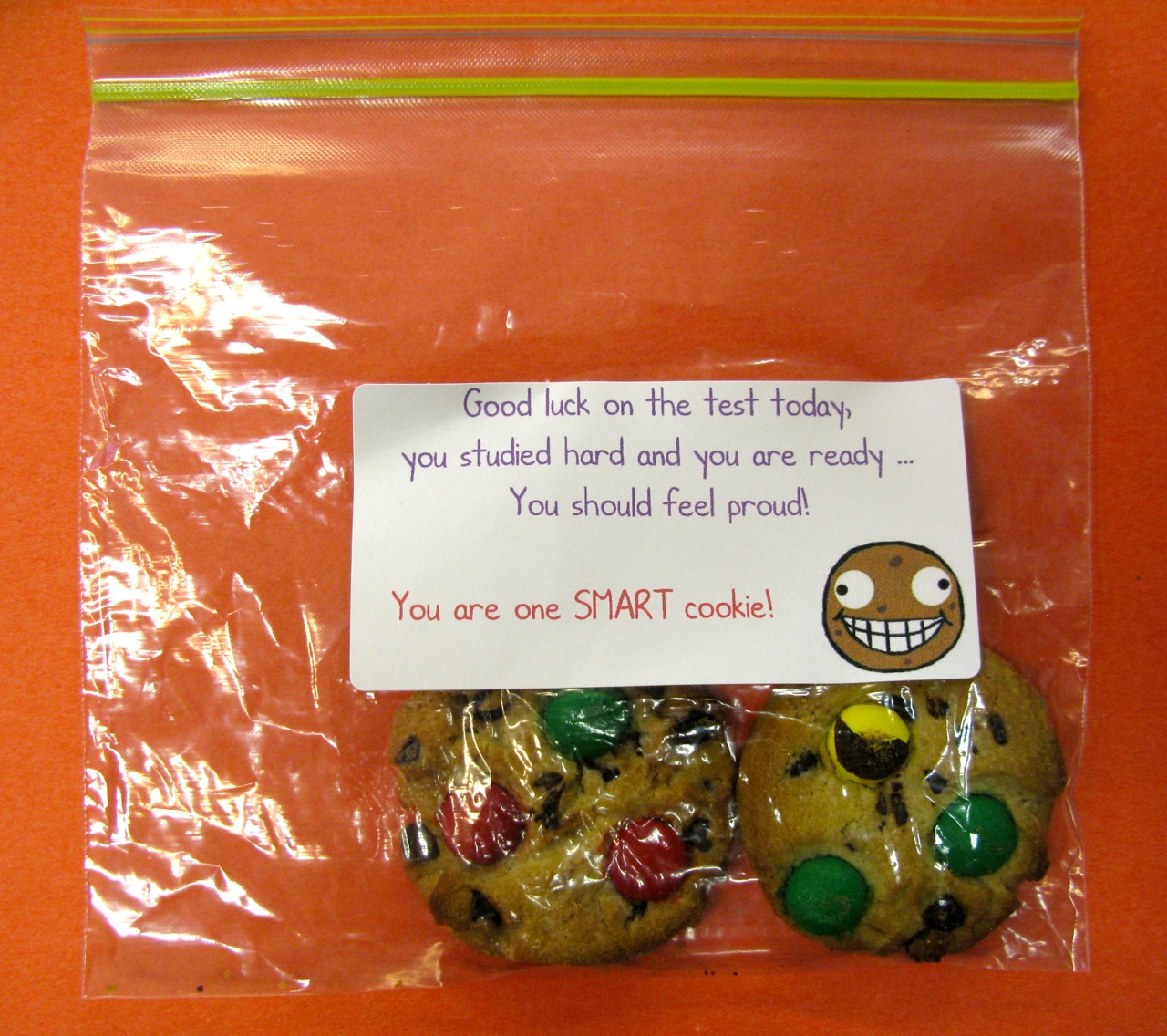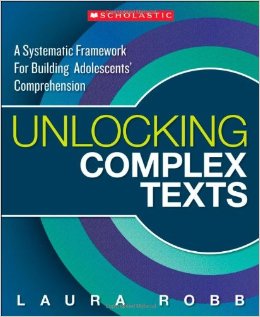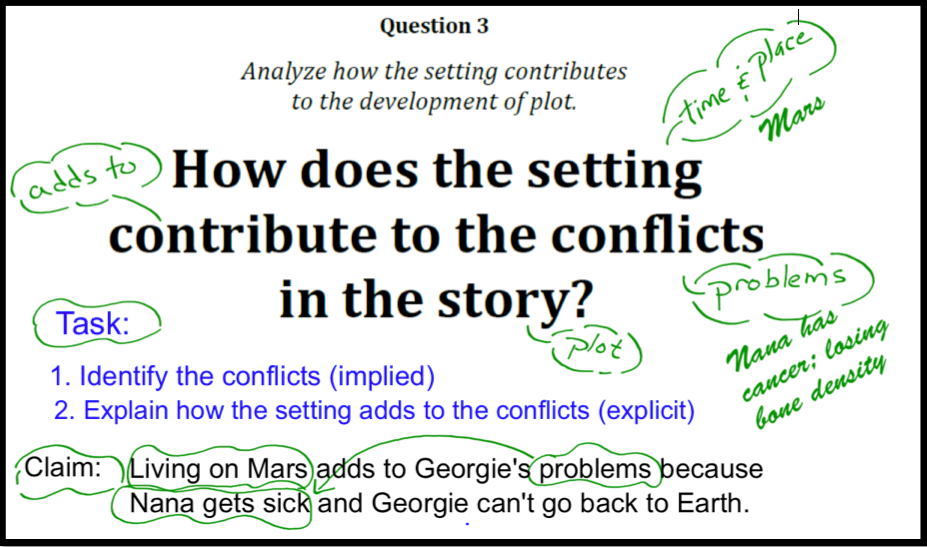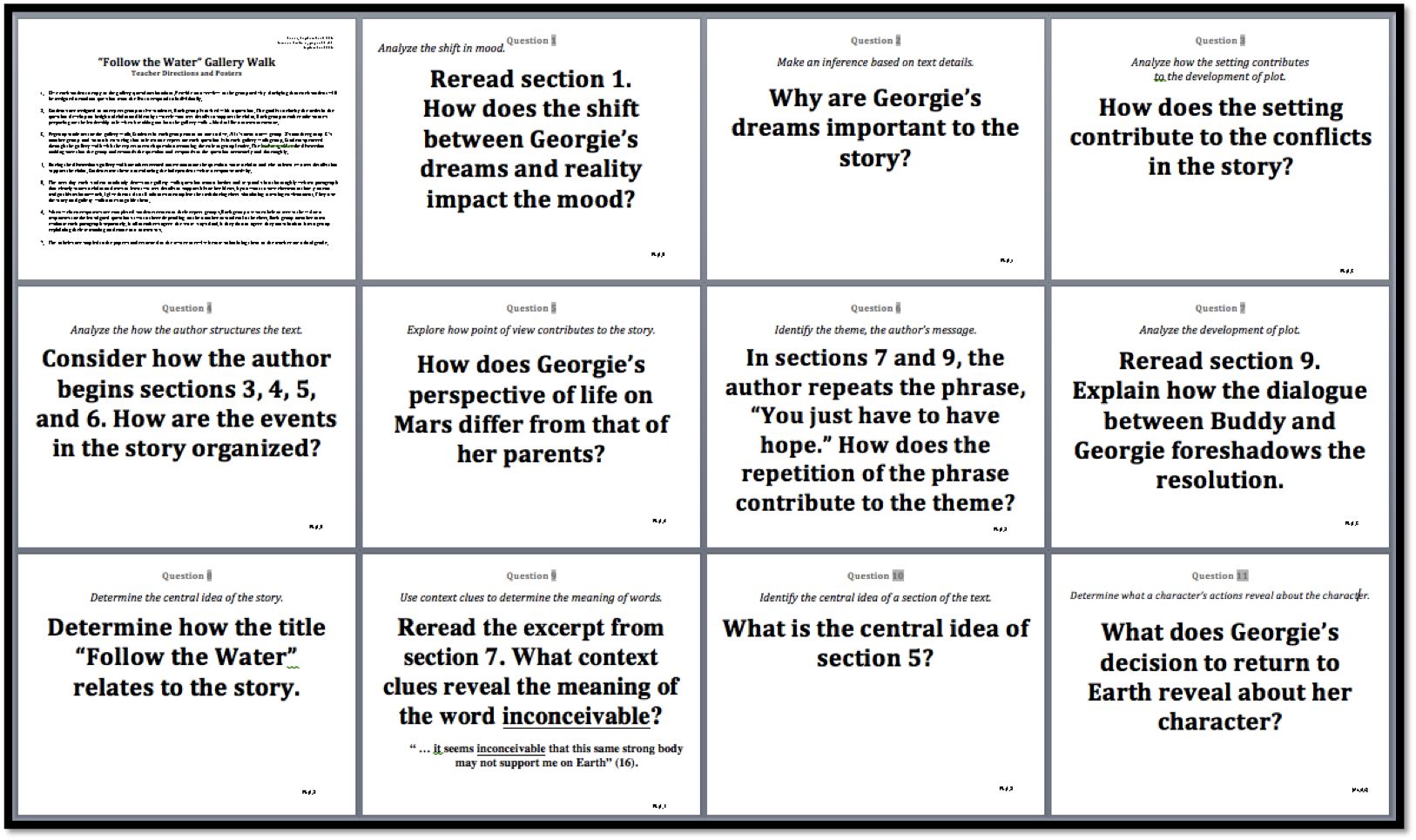Tonight's message is just for me. However, if you can relate to it, please enjoy! One thing that I have learned about myself is that I often allow one or two things to skew my outlook of my entire day. Each evening when I get home from work, my husband or sons ask me about my day. For some reason, I can quickly recall the things that went wrong. Sometimes I talk about a child that misbehaved. Other times I complain about a parent email or interaction that was unpleasant. The truth is that most of the time, less than 10% of my day is "bad". I rarely have more than one daily parent complaint and most of the incidents that I handle don't monopolize my day. The other 90% is filled with great things that I see in the classrooms or teachers who stop in to share funny stories.
Therefore, my mission over the next few weeks (should I choose to accept it) is to keep the 10% to myself and share the 90% with anyone who will listen. I am going to surprise my family by sharing the positive things about my day and letting go of the negative. We all have tough moments throughout each day, but we have a great school and can't allow the 10% to take up so much of our focus that we forget about the 90%.
Staff Spotlight
This week I would like to shine the spotlight on Madison Clark and Megan Pepples. These two new teachers have taken Medlock Bridge by storm with their energy and enthusiasm for teaching. In fact, to walk into their classrooms, you would never know that they are brand new teachers. The level of student engagement in their rooms is high and parents have shared with me their appreciation of the way that they interact with students. In fact, earlier this year, Madison and Megan spent a Friday evening in Cumming, Ga. attending a cheer leading event for some of their students. Just last Saturday, Madison spent the day at Centennial High School judging the water rocket competition in the rain. And as a result of Megan's persistence, I was compelled to take a critical look at the Front Row program and make the purchase for school wide use. These ladies collaborate well with their team and accept feedback to improve their instruction. As they draw near to the end of their first year of teaching, I would like to applaud them for their hard work and dedication to our students.
How Audiobooks Can Help Kids Who Struggle with Reading

School librarian Mary Ann Scheuer remembers a second grader who couldn’t keep up with the class during reading time. The child was a grade-level behind in reading, and while the rest of the class could sit quietly for 30 minutes, engrossed in Horrible Harry, this child began to act out after ten frustrating minutes with the book. On Scheuer’s recommendation, the teacher introduced the student to the same story via an audiobook; he listened to the story, and then sat alone with the book to read on his own. Scheuer recalls the boy saying, “I read it so much faster by myself after I listened to it!.” She added, “It was a game changer for him.”
Teachers and parents who read aloud to children have long known that good stories have the power to captivate the most restless of kids. Before books became the main means of conveying information, spoken word was the vehicle for sharing culture, tradition and values. The continuation of those experiences depended on the attention of the listener. Being able to listen well and remember what was said was an essential part of the oral tradition.
Research underscores the link between listening and literacy. Work by Betty Hart and Todd Risley found that the vocabularies of three-year-olds were predictive of their language and reading skills at age ten. Studies carried out at Stanford showed a gap in vocabularies between children of the well-off and those with lower socioeconomic status is apparent in children as young as 18 months. And professor Nina Kraus at Northwestern University, who explores the complexity of sound processing in the brain, has found that a variety of factors, including income level and a mother’s education, play a role in how well children process sound—which in turn affects reading ability.
Educators like Mary Ann Scheuer, who has taught with and promoted audiobooks in the classroom — and began her own blog Great Kid Books — sees how exposing kids to the spoken word via rich stories improves literacy. While books require readers to decode every word, stories told aloud free up the listener to connect with the story and the storyteller. “It provides an emotional connection to the narrator,” Scheuer said, which in turn motivates kids to continue listening. Well-told stories can also fill the vocabulary gap for those students who haven’t been exposed to a rich array of words over their lives. For children with already abundant vocabularies, listening to stories with more complex language expands their stable of words and exposes them to more sophisticated stories. Scheuer said her 8th grade daughter, who struggles with ADD, listened to Walter Isaacson’s massive biography of Steve Jobs—something she would have given up on in written form—while doodling in a notebook. “It pulled her in and kept her attention,” she said.
For Ashley Alicea, a third grade teacher at W.J. Gurganus Elementary School in Havelock, North Carolina, audiobooks have been most transformative for those kids who hate to read. “It almost seems to open up a world of reading for them,” Alicea said. She encourages kids to make a movie in their minds while listening—to visualize the story they’re hearing. Absent the need to decipher each word, reread for content, and then picture the story, these struggling readers listening to stories soon fall for the book itself, and are able to participate in class discussions about plot and character. Many kids go on to read the books after hearing them read aloud. And audiobooks help all readers improve their fluency: Alicea sometimes plays a paragraph, and invites her students to read it aloud and try to match the narrator’s pacing, tone, and expression. “Every modality and learning type can benefit from audiobooks,” Alicea said.
Audiobooks and podcasts are popular ways of bringing stories to students, and each mode brings something unique to the class. William Weil, who with his wife founded the audiobook streaming service for schools, Tales2Go, said that even kids surrounded by articulate adults benefit from hearing the complex words and sentences found in novels and nonfiction; correct usage is often lacking in ordinary conversation. Further, audiobooks come with “transcripts”—the book itself—which help support literacy. Finally, advances in digital technology allow teachers to bring audiobooks to the classroom without depending on dated cassettes or CDs: the site Tales2Go allows teachers and schools to buy instant, simultaneous, and unlimited access to audiobooks, letting students listen to stories on multiple devices.
Podcasts have their own virtues. Monica Brady-Myerov, who provides NPR podcasts to teachers through Listenwise, said that hearing real people tell their stories triggers an emotional reaction among listeners. “Empathy comes from listening to other people tell their story, which improves learning,” she said—the same reason author Malcolm Gladwell gave for starting his own podcast: to “move people emotionally.” Also, unlike audiobooks, which started on paper and were written to be read, podcasts are created to be heard. “That’s what moves the story along—the flow; it sounds better,” she said. Podcasts also often have the advantage of being shorter. What most podcasts don’t have, versus audiobooks? The editors or publishers who provide oversight. “A lot are provided by people who are just interested in the subject,” she said. This is fine, Brady-Myerov adds, except that the “tsunami of podcasts” makes it harder for teachers and parents to discern the legitimate from the looney.
For teachers eager to introduce audiobooks and podcasts to their classroom, the following compilation of stories have been recommended by educators and individuals cited in this post:
Audiobooks
Preschool-second grade
Creepy Carrots, by James Naughton
Don’t Let the Pigeon Drive the Bus, by Mo Willems
Dynamite Daniels, by Nikki Grimes
Frog & Toad, by Arnold Lobel
Mercy Watson, by Kate DiCamillo
Magic Treehouse Series, by Mary Pope Osborne
Year of the Dog, by Grace Lin
Creepy Carrots, by James Naughton
Don’t Let the Pigeon Drive the Bus, by Mo Willems
Dynamite Daniels, by Nikki Grimes
Frog & Toad, by Arnold Lobel
Mercy Watson, by Kate DiCamillo
Magic Treehouse Series, by Mary Pope Osborne
Year of the Dog, by Grace Lin
Elementary level
What Elephants Know, by Eric Dinerstein
Turtle in Paradise, by Jennifer Holm
Bud, Not Buddy, by Christopher Paul Curtis
The Watsons Go to Birmingham, by Christopher Paul Curtis
H.O.R.S.E. A Game of Basketball and Imagination, by Christopher Myers
Echo, by Pam Munoz Ryan
Five, Six, Seven, Nate! By Tim Federle
The Witches, and BFG, by Roald Dahl
Deep and Dark and Dangerous, by Mary Downing Hahn
Ghetto Cowboy, by G. Neri
The War That Saved My Life, Kimberly Brubaker Bradley
Home of the Brave, by Katherine Applegate
What Elephants Know, by Eric Dinerstein
Turtle in Paradise, by Jennifer Holm
Bud, Not Buddy, by Christopher Paul Curtis
The Watsons Go to Birmingham, by Christopher Paul Curtis
H.O.R.S.E. A Game of Basketball and Imagination, by Christopher Myers
Echo, by Pam Munoz Ryan
Five, Six, Seven, Nate! By Tim Federle
The Witches, and BFG, by Roald Dahl
Deep and Dark and Dangerous, by Mary Downing Hahn
Ghetto Cowboy, by G. Neri
The War That Saved My Life, Kimberly Brubaker Bradley
Home of the Brave, by Katherine Applegate
Teenagers
All American Boy, by Jason Reynolds
Anna and the Swallow Man, by Gavriel Savit
Nimona, by Noelle Stevenson
The Darkest Part of the Forest, by Holly Black
Eleanor & Park: A Novel, by Rainbow Rowell
The Fault in Our Stars, by John Green
All American Boy, by Jason Reynolds
Anna and the Swallow Man, by Gavriel Savit
Nimona, by Noelle Stevenson
The Darkest Part of the Forest, by Holly Black
Eleanor & Park: A Novel, by Rainbow Rowell
The Fault in Our Stars, by John Green
Podcasts
Pre-K to 3But Why? – From Vermont Public Radio, starting with questions asked by young children. (Do bumblebees have hearts?)
Earsnacks – An exploration of various topics, using kids’ voices, expert opinions, and music.
Earsnacks – An exploration of various topics, using kids’ voices, expert opinions, and music.
Grades 4 – 8Welcome to Nightvale – A dark and funny exploration of the fictional town of Nightvale.
The Radio Adventures of Eleanor Amplified– From WHYY in Philadelphia, this show follows young journalist and adventurer Eleanor, who goes from space to sea. With sound effects, lots of voices, and music.
The Radio Adventures of Eleanor Amplified– From WHYY in Philadelphia, this show follows young journalist and adventurer Eleanor, who goes from space to sea. With sound effects, lots of voices, and music.
Grades 9 – 12Lore – Soon to be a TV show, this podcast examines the origins of vampires, witches and other grim historical tales.
Serial – From NPR’s This American Life, these podcast series examine two dramatic events: the murder trial of Adnan Syed, and the disappearance of Sergeant Bowe Bergdahl from his unit in Afghanistan. (Adult content and language.)
Mortified – Adults reading from their teenage diaries, with much embarrassment and humor. (Adult content and language.)
RadioLab – From NPR, documentary-style examinations of real events and problems, told with music.
Revisionist History – From Malcolm Gladwell, close looks at historical events that were either overlooked or possibly misinterpreted.
Serial – From NPR’s This American Life, these podcast series examine two dramatic events: the murder trial of Adnan Syed, and the disappearance of Sergeant Bowe Bergdahl from his unit in Afghanistan. (Adult content and language.)
Mortified – Adults reading from their teenage diaries, with much embarrassment and humor. (Adult content and language.)
RadioLab – From NPR, documentary-style examinations of real events and problems, told with music.
Revisionist History – From Malcolm Gladwell, close looks at historical events that were either overlooked or possibly misinterpreted.





